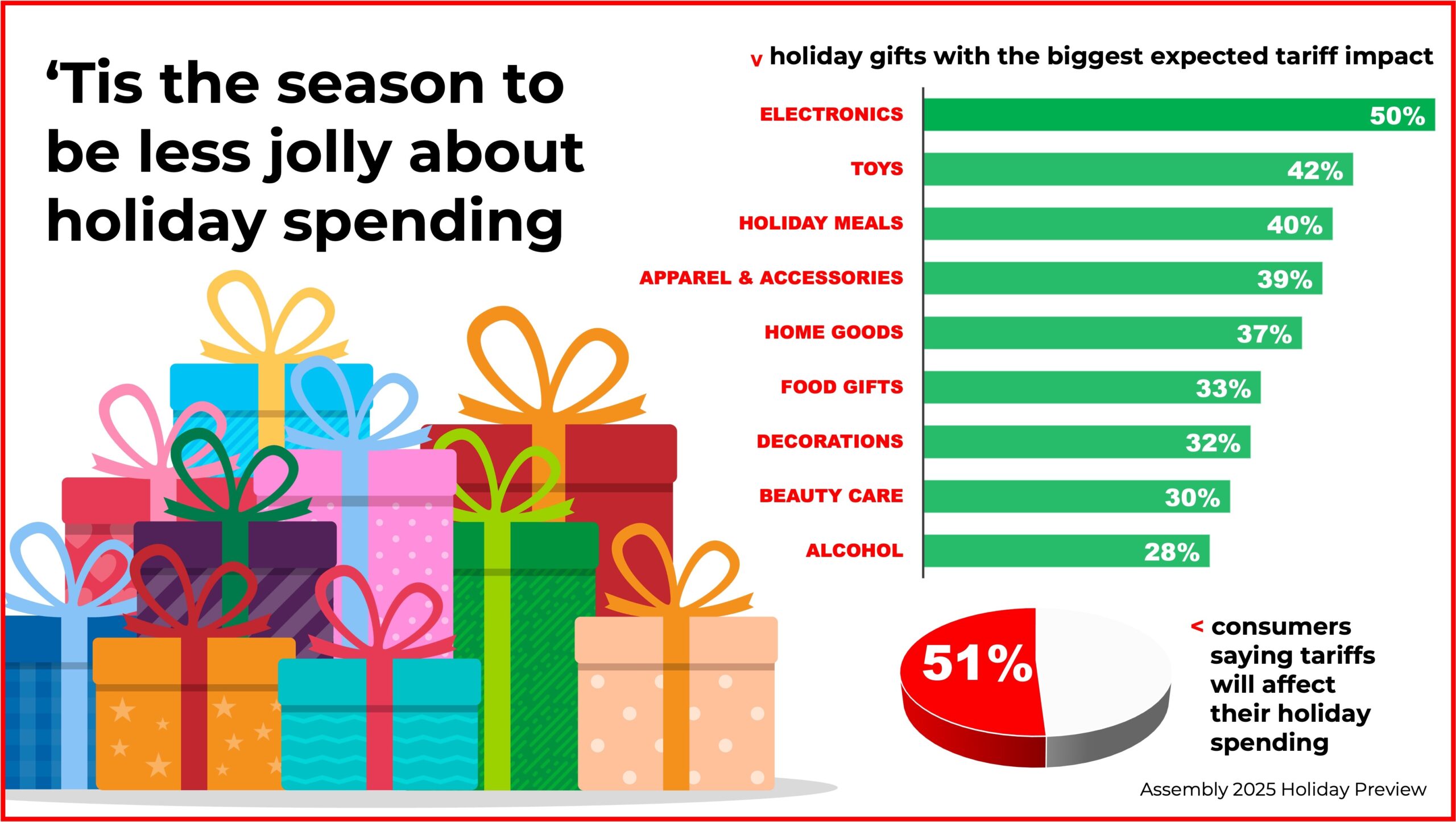Weekly Data
WHAT THE DATA SAY: 51% say tariffs will slow holiday spending; 87% plan to shop early
By: Ray Day
CONTACT:
We wanted to share our latest consumer and business insights, based on research from Stagwell. Among the highlights of our weekly consumer sentiment tracking:

FRUGAL HOLIDAY SHOPPING
Holiday shopping will increase at a slower rate than previous years and will be defined by intentional spending, according to Assembly’s 2025 holiday preview.
- Holiday sales will rise 1.2%, below the full-year growth rate of 1.4%.
- 51% of consumers say tariffs will have an impact on their holiday shopping.
- Electronics (50%) and toys (42%) have the perception of being most affected by tariffs due to global sourcing and price sensitivity.
- 87% say they plan to start shopping earlier or at the same time as last year.
- Women are 25% more likely to already know what they want to buy than men.
- Early shoppers want to spread out spending and manage their budget (47%) and take advantage of early deals (46%).
- Consumers are buying fewer gifts for several reasons: 77% will try to find more practical options, 71% want to give more meaningful gifts, and 33% are opting for handmade items.
- Younger consumers ages (ages 25-34) are opting for connection over consumption: 53% prefer giving experiences over physical items, and 57% prefer giving gifts that create shared experiences.
GEN Z NOT EXCITED ABOUT SKILLED TRADES
While skilled trades offer a respected career path, they are thought of less highly by younger generations, according to our Harris Poll report.
- 91% of Americans say trade jobs are just as important to society as white-collar jobs.
- 90% say most people don’t realize how well-paying skilled trades can be.
- 86% say skilled trade careers are overlooked in schools today.
- Younger generations don’t think as highly of skilled trades: 36% of Gen Z strongly agree skilled trades offer a more affordable path to a good career.
- 38% of Gen Z say skilled trades offer the best job opportunities (compared with 40% of Millennials, 45% of Gen X and 59% of Boomers).
- See also: Parents Want More Than ABCs from Early Education
POWER OF TV ADVERTISING ON PRESCRIPTION MEDS
Second to doctors, TV ads are the most popular way consumers learn about new medications, according to our Harris Poll research with Cadent.
- 62% of consumers use TV ads as a primary source for learning about new prescription and over-the-counter drugs (compared with 68% for doctors).
- 70% said they would ask their doctor about a prescription med after seeing an ad for it.
- 75% said that receiving educational info about health conditions from a pharma company is “valuable.”
- 69% said they trust the educational info they receive from pharma companies.
- At the same time, 57% said they find it annoying when they visit a health website and then receive ads for a related medication.
ICYMI: In case you missed it, check out the thought-leadership and happenings around Stagwell making news:
- What Kids Told Us About How to Get Them Off Their Phones
- Anchoring Your Employer Brand Within Its Culture
- B2B content gets personal: why authenticity is the new authority
- From Prediction to Reality: How Our 2019 Messaging Strategy for Foldable Phones Stands Up in 2025
- Misinformation is one of the biggest issues of our time
Newsletter
Sign Up
Related
Articles
Artificial Intelligence, Artificial intelligence, In the News, Marketing Frontiers, Press Releases
Nov 25, 2025
Gradial and Stagwell (STGW) Team Up to Bring Agentic Marketing to More Brands

Artificial intelligence, In the News, Investments & Financials, Marketing Frontiers, Press Releases
Nov 24, 2025
Stagwell Partners with Harvard’s OpenDP to Guarantee Customer Privacy, Beginning with its Partnership with Palantir for the Future of Marketing

Artificial Intelligence, In the News, Offices, Press Releases
Nov 24, 2025
STAGWELL (STGW) REVEALS NEW SINGAPORE HUB TO POWER AI-DRIVEN GROWTH AND INNOVATION ACROSS APAC





